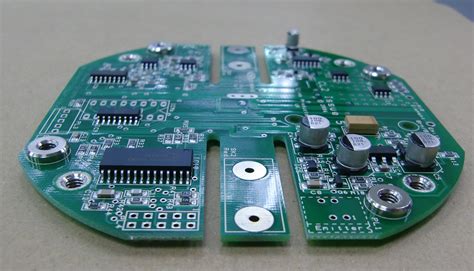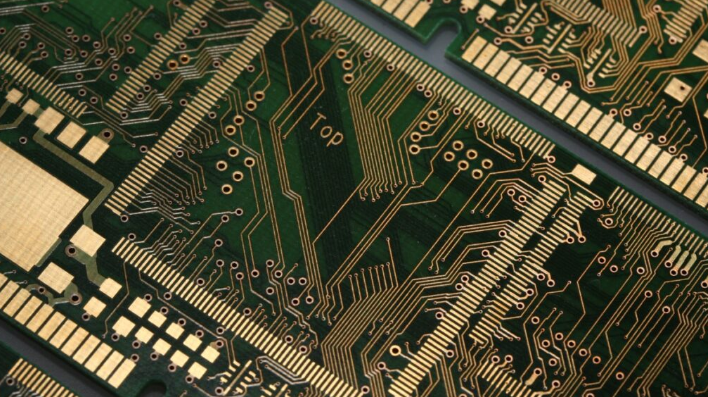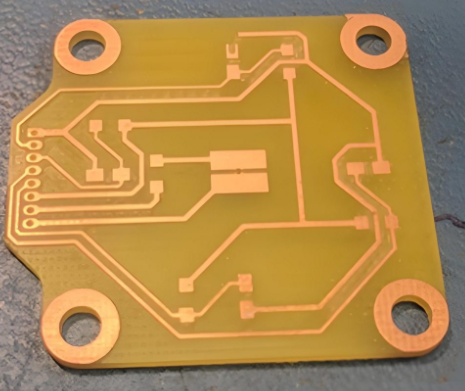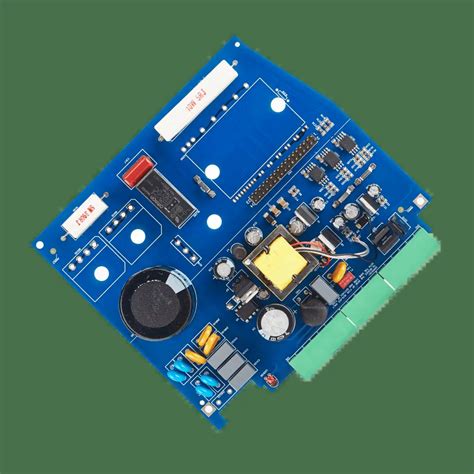Mastering the Art of Assembling PCB Components for Success
Key Takeaways
In the realm of pcb assembly, understanding the fundamental components and techniques is crucial for achieving high-quality results. One of the key takeaways is the importance of pcba (Printed Circuit Board Assembly) to streamline your assembly process. Begin by familiarizing yourself with various essential tools that play a significant role in effective assembly. Devices like soldering irons, tweezers, and multimeters are indispensable for ensuring precision and reliability in your projects.
Moreover, having a solid grasp of PCB layouts can dramatically improve your efficiency during assembly. Pay attention to component placement and alignment; even minor missteps can lead to major setbacks in functionality. As you progress, focus on mastering step-by-step soldering techniques, as these skills are critical for a successful outcome.
It’s equally important to recognize and mitigate common mistakes that can occur in pcb assembly. Being aware of these pitfalls not only enhances your skills but also improves the overall quality of your work. Lastly, incorporating testing and quality control measures into your workflow ensures that each project meets the highest standards before reaching its end use.
By implementing these key takeaways into your routine, you will not only enhance your capabilities but also elevate the performance of your electronic projects significantly.
Essential Tools for PCB Component Assembly
Successfully executing PCB assembly requires a range of specialized tools that streamline the process and enhance efficiency. At the heart of every well-equipped workstation is a soldering iron, which is vital for attaching components to the printed circuit board (PCB). When selecting a soldering iron, consider features such as adjustable temperature settings and wattage to ensure optimal soldering conditions. In addition, solder wire with appropriate thickness and composition plays a crucial role in achieving reliable electrical connections.
Moreover, precision tools such as tweezers and plucking tools are essential for handling small components during assembly. These allow for meticulous placement of parts, which is especially important in dense layouts. To aid in visual accuracy during the assembly process, a magnifying lamp or microscope can be invaluable, enabling a closer view of fine details that may otherwise go unnoticed.
In terms of ensuring proper alignment and positioning of components on the PCB, a digital multimeter is advantageous for checking connections before soldering begins. This step helps prevent any mistakes that could compromise the integrity of the pcba. Lastly, maintaining an organized workspace with an appropriate ESD mat protects sensitive electronic components from electrostatic discharge.
Utilizing these essential tools not only enhances the quality of your work but also contributes to achieving successful outcomes in your electronic projects. By investing in quality equipment and understanding how to use these tools effectively, you can master the art of component assembly on printed circuit boards.
Understanding PCB Layouts for Efficient Assembly
A solid grasp of PCB layouts is fundamental for successful pcb assembly as it directly influences the ease and efficiency of component placement. An effective layout ensures that components are arranged in a logical manner, minimizing the distance between connections and enhancing signal integrity. Key considerations when designing a layout include component footprint compatibility, thermal management, and accessibility for soldering.
Utilizing software tools designed for PCB design can aid in visualizing the end result and identifying potential issues before assembly begins. When creating these layouts, it’s crucial to focus on component alignment to guarantee proper solder connections during the pcba process. Additionally, understanding the specifications of each component—including dimensions and pin configurations—will aid in avoiding common pitfalls that can hinder the assembly process.
By prioritizing a meticulous approach to PCB layouts, engineers and hobbyists alike can increase their chances of achieving a successful assembly. Clean and organized layouts help to streamline the overall workflow, making it easier to implement best practices in both manual and automated soldering techniques. Ultimately, investing time in understanding PCB layouts will lead to enhancements not just in assembly efficiency but also in the overall performance of electronic devices.
Step-by-Step Guide to Soldering Techniques
Soldering is a critical skill in the pcb assembly process, as it ensures that all components are securely connected to the printed circuit board. A smooth soldering process not only enhances the durability of the connections but also minimizes defects. To begin, it’s essential to prepare your work area. This includes organizing your essential tools such as soldering irons, solder wire, flux, and appropriate safety equipment.
Next, understanding the layout of the PCB is vital. Each component should be placed according to its designated position on the board, taking care to observe any specific orientation requirements. When applying heat with a soldering iron, aim for a quick and efficient technique—apply heat to both the pad and the component lead before introducing solder. This method ensures a strong bond while preventing damage from excessive heat.
The following table summarizes key steps in effective soldering:
| Step | Description |
|---|---|
| Preparation | Organize tools and clean workspace |
| Understanding PCB Layout | Identify component placements |
| Heating Technique | Heat both pad & lead before adding solder |
| Inspection | Check for proper solder joint formation |
Additionally, one must be cautious of common pitfalls during pcba processes such as cold joints or bridging—where solder accidentally connects two adjacent pads. Regular inspection and practice can significantly improve your techniques and outcomes in PCB assembly projects.
As you develop your skills in these soldering techniques, remember that practice is key. Over time, you will cultivate a sense of confidence and proficiency that will enhance both your personal projects and professional aspirations within electronics manufacturing.
Common Mistakes in PCB Assembly and How to Avoid Them
In the realm of PCB assembly, several common pitfalls can hinder the success of your project. One major mistake is neglecting to thoroughly inspect the PCB layout before beginning, which can lead to incorrect placement of components and suboptimal functionality. Always double-check for proper component orientation and alignment, as even minor errors can create significant issues later on. Additionally, improper soldering techniques—such as using too much solder or overheating components—can result in faulty connections or damaged parts. To combat this, invest time in learning professional soldering skills or consider utilizing more advanced techniques like reflow soldering.
“Taking the time to understand each component’s role will vastly improve both your assembly process and overall product quality.”
Moreover, overlooking the importance of a clean workspace can contribute to contamination or damage during assembly. Regularly organizing tools and components can streamline your workflow and prevent unnecessary errors. Implementing best practices for handling sensitive components is also crucial; static electricity can severely affect functionality. By being mindful of these common mistakes and consistently applying effective strategies, you will enhance the outcome of your PCBA efforts.
Testing and Quality Control in PCB Component Assembly
Ensuring the reliability and performance of your PCB assembly is paramount, which brings us to the significance of testing and quality control in the assembly process. As you delve into PCBA, it is essential to establish robust testing protocols at various stages of assembly. First, implement visual inspections to catch any obvious errors such as misplaced components or soldering defects. Beyond visual checks, integrating automated optical inspection (AOI) systems can enhance the detection of issues at a microscopic level that may go unnoticed during manual reviews.
Moreover, functional testing should be conducted to assess whether each assembled board operates according to its specifications. This involves validating electrical connections and ensuring that signals are correctly transmitting between components. For more complex designs, employing in-circuit testing (ICT) allows for a more detailed evaluation of individual components without removing them from the PCB assembly.
Understanding that every failure can be costly—both in terms of time and resources—establishing a culture of quality can drastically improve outcomes. This means not only identifying defects after they occur but also fostering a proactive environment that emphasizes preventive measures during production. To sum up, a commitment to rigorous testing and quality control not only enhances the reliability of your PCBA but significantly contributes to overall project success, ensuring that electronic devices meet both user expectations and industry standards.
Innovative Technologies in PCB Manufacturing
The landscape of PCB assembly has evolved significantly with the advent of innovative technologies that streamline the manufacturing process. Among these advancements is the use of automated soldering techniques, which enhance precision and reduce the risk of human error. This automation allows for higher production speeds while maintaining high quality in solder joints, a crucial aspect of PCBA quality assurance. Furthermore, surface mount technology (SMT) has revolutionized how components are placed on a board, enabling manufacturers to assemble smaller and more complex circuits without compromising performance. Another noteworthy development is the incorporation of robotic pick-and-place systems, which dramatically improve component placement accuracy and reduce assembly time. Additionally, augmented reality (AR) tools are emerging as effective training aids for technicians in understanding complex PCB layouts, thereby improving assembly efficiency through enhanced visualization techniques. As these technologies continue to advance, they pave the way for more cost-effective and efficient methods in PCB assembly, ultimately leading to better-performing electronics across various industries.
Optimizing Your Workspace for Enhanced Efficiency
Creating an efficient workspace is crucial for successful PCB assembly. A well-organized environment not only maximizes productivity but also reduces the risk of making mistakes during the assembly process. Start by ensuring that your workstation is clean and free of clutter. A tidy area allows for easier access to necessary tools and components, facilitating smoother workflow when working on PCBA tasks. Implementing designated zones for different activities, such as soldering, component placement, and testing, helps maintain focus and efficiency.
Lighting is another essential factor in optimizing your workspace. Proper illumination enables better visibility of intricate PCB layouts and components, allowing you to work more effectively. Additionally, invest in ergonomic tools to enhance comfort during long assembly sessions; this includes comfortable seating and adjustable work surfaces that support your posture.
Organizing components systematically can significantly impact your productivity. Use labeled bins or trays to categorize components based on type or size, making them easily accessible when needed. Adopting these practices not only streamlines the PCB assembly process but also contributes to achieving high-quality results in every project you undertake. Prioritizing a well-structured workspace will ultimately lead to improvements in overall performance and precision as you dive into the art of assembling PCB components with confidence.
Best Practices for Component Placement and Alignment
Successful pcb assembly hinges on the meticulous placement and alignment of components. When starting the assembly process, it’s crucial to ensure that each component is positioned accurately on the printed circuit board (PCB). Misalignment can lead to suboptimal performance or complete failure of the electronic project. One effective technique is to utilize alignment guides, which help in maintaining uniform spacing and orientation. Furthermore, understanding the footprint of each component is essential, as it dictates how well each PCBA will adhere to the board. Placing components close to their corresponding traces minimizes the path length for signals, reducing potential interference and enhancing performance.
Another important practice is checking for polarity in components like diodes and electrolytic capacitors before soldering them into place, as incorrect installation can be detrimental to their function. Using precise tools like tweezers or vacuum pickups can aid in placing smaller components with accuracy. Always take time to visually inspect component placement before proceeding with soldering; an overlooked misalignment can create complications that are difficult to troubleshoot later on. By adhering to these best practices, you lay a solid foundation for a successful assembly process, ultimately ensuring that your PCB assembly not only meets specifications but also performs reliably in real-world applications.
Conclusion
In the realm of pcb assembly, achieving excellence hinges on a deep understanding of both fundamental concepts and intricate techniques. Throughout this discussion, we have delved into the essential components that constitute a successful pcba process. From careful component placement to employing the right soldering techniques, every step is crucial to ensuring the optimal performance of your electronic projects. By acknowledging common pitfalls and prioritizing quality control, you can mitigate errors that could compromise your product’s functionality. Furthermore, leveraging innovative technologies in PCB manufacturing can greatly enhance both efficiency and accuracy in your assembly efforts. As you continue to refine your skills, remember that an organized workspace plays a pivotal role in streamlining the overall process, allowing for improved focus on each task at hand. Embracing these best practices will not only foster a greater understanding of pcb assembly but will also contribute significantly to your success in creating high-quality electronic devices. With dedication and attention to detail, you can truly master the art of assembling PCB components, ensuring that each project meets the standards required for technological advancement.
FAQs
Q: What is PCB assembly and why is it important?
A: PCB assembly (PCBA) is the process of connecting electronic components to a printed circuit board (PCB) to create functional electronic devices. It is crucial for ensuring that the circuit board operates as intended and meets performance standards.
Q: What tools do I need for effective PCB assembly?
A: Essential tools include soldering iron, solder, tweezers, and multimeters. Utilizing these tools correctly is vital for achieving high-quality results in your PCB assembly projects.
Q: How can I avoid common mistakes during the PCBA process?
A: To avoid mistakes, ensure that you understand your PCB layout thoroughly, double-check component placements, and keep your work area organized. Proper training in soldering techniques will also minimize errors in PCB assembly.
Q: What are the best practices for component placement on a PCB?
A: Best practices involve following design specifications closely, placing components logically based on their functions, and ensuring adequate spacing to facilitate soldering. Proper alignment influences the success of your PCBA.
Q: How do I test the PCBA after assembly?
A: Testing can be performed using tools like multimeters to check connections, functionality tests for individual components, and visual inspections to identify any soldering defects or misaligned parts.
Q: Are there any innovative technologies improving PCB manufacturing?
A: Yes, innovations such as automated assembly lines, advanced soldering techniques like selective soldering, and advancements in materials are significantly enhancing pcb assembly, making it more efficient and reliable.







